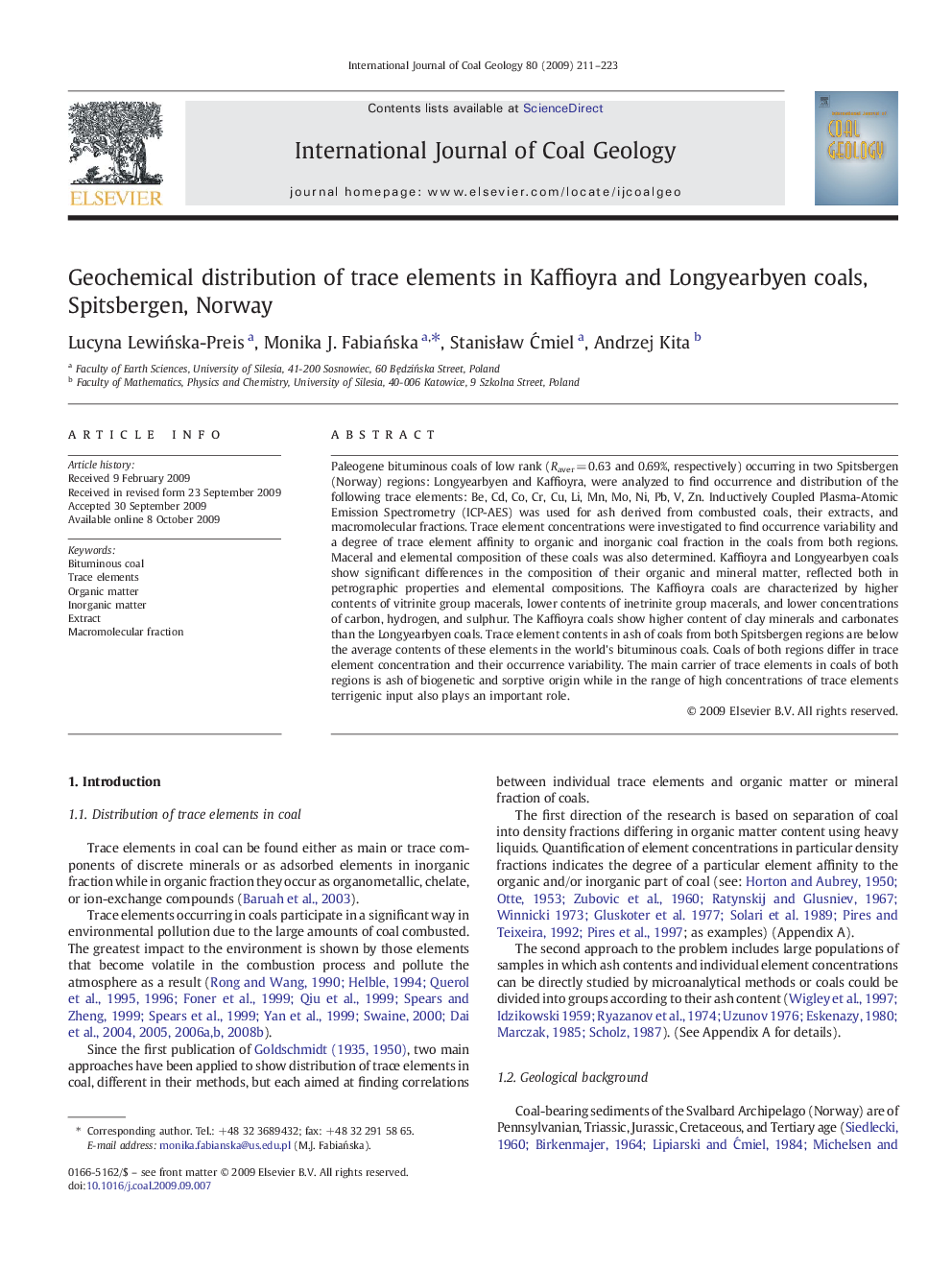| Article ID | Journal | Published Year | Pages | File Type |
|---|---|---|---|---|
| 1753823 | International Journal of Coal Geology | 2009 | 13 Pages |
Paleogene bituminous coals of low rank (Raver = 0.63 and 0.69%, respectively) occurring in two Spitsbergen (Norway) regions: Longyearbyen and Kaffioyra, were analyzed to find occurrence and distribution of the following trace elements: Be, Cd, Co, Cr, Cu, Li, Mn, Mo, Ni, Pb, V, Zn. Inductively Coupled Plasma-Atomic Emission Spectrometry (ICP-AES) was used for ash derived from combusted coals, their extracts, and macromolecular fractions. Trace element concentrations were investigated to find occurrence variability and a degree of trace element affinity to organic and inorganic coal fraction in the coals from both regions. Maceral and elemental composition of these coals was also determined. Kaffioyra and Longyearbyen coals show significant differences in the composition of their organic and mineral matter, reflected both in petrographic properties and elemental compositions. The Kaffioyra coals are characterized by higher contents of vitrinite group macerals, lower contents of inetrinite group macerals, and lower concentrations of carbon, hydrogen, and sulphur. The Kaffioyra coals show higher content of clay minerals and carbonates than the Longyearbyen coals. Trace element contents in ash of coals from both Spitsbergen regions are below the average contents of these elements in the world's bituminous coals. Coals of both regions differ in trace element concentration and their occurrence variability. The main carrier of trace elements in coals of both regions is ash of biogenetic and sorptive origin while in the range of high concentrations of trace elements terrigenic input also plays an important role.
